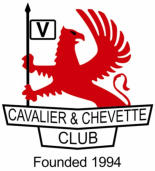





© Cavalier and Chevette Club 2020
With acknowledgement to Vauxhall Motors Limited
website designed by Bricknalls Web Design Services
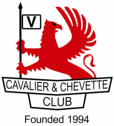
Chevette Saloon/Hatch/Estate 1975-1984
The Chevette was Vauxhall’s version of the GM T Car programme was GM's first "world car programme". Design of the Chevette started in February 1972. In March 1972 after analysis of the many package studies carried out a full size styling clay model was built and presented it to
management in March 1972.
Having completed the package studies, the appraisal rides, the initial cost estimates, a full size clay styling model, as well as the many other tasks such as sales volume forecasts, computer performance predictions, etc, Vauxhall could now go on to prepare a formalised product
programme or specification which would enable all departments at Vauxhall to finalise cost studies and timing which would give management the necessary information and costs to get project approval from the GM Finance Committee in New York.
Start of production was planned for August 1974, unfortunately, a three month delay occurred in the latter part of 1972 which was unavoidable and this meant start of production had to be postponed to February 1975.
Two pre-test cars which in effect were hatchback prototype under bodies built into old Kadett body shells and fitted with the Vauxhall 1256cc engine and Opel mechanicals. These cars which Vauxhall had running in advance of prototype build gave Vauxhall the opportunity to test and
evaluate the power unit, axles, suspension, steering, and even seats on public roads and the Millbrook proving ground at a very early stage of the programme
Vauxhall were one of the GM divisions that participated in the joint program for the T-Car which was based on the Opel Kadett which was advancing through the design stage at the time. It was in fact quite an international team with draughtsmen from Vauxhall, Opel, Holden, South
Africa, Brazil, and Argentina, all working alongside each other. Parts were being made at Vauxhall Engineering being assembled at Opel and vice versa. Vauxhall even bought parts from Brazil which because of their early introduction of their programme (6 months prior to Opel) Vauxhall
could obtain from production try out runs.
Opel were responsible for the design of the 2 and 4 door saloon, the Coupe and the Estate. Vauxhall were responsible for the Hatchback. In June 1974 Opel decided that the Vauxhall hatch back design was looking so good they too must market a similar product and the Kadett City was
introduced.
The Chevette was designed to fit into the Vauxhall range below the Viva, and was initially presented as a hatchback, a style that soared in popularity during the 1970s.
15 complete prototype vehicles were built and tested and 5 pre-test cars were installed with Vauxhall mechanics and prototype parts into Opel Kadett production vehicles.
The first prototypes were completed at Opel and put on the road in February 1973. Some of these cars were used at the Opel Dudenhfen test facility for pave and initial durability tests, the remainder where shipped to Luton for the main Vauxhall test programme.
After prototype No. 3 the prototype build programme was transferred in stages to Vauxhall with the last five cars being built from Vauxhall manufactured parts assembled to a strict design check schedule.
In addition to this prototype programme, Vauxhall had of course the experience of the Kadett which was nearing production introduction and had the satisfaction of knowing that common designed components had the backing of this earlier programme involving over 30 prototypes.
However with the Kadett nearing production before the Chevette, Vauxhall decided that the Chevette needed it’s own identity so the Styling Department under the charge of Wayne Cherry put scheme after scheme to the management with new grilles, headlamps and bumpers all to no
avail the car was still recognisable as the Opel Kadett.
Finally in April 1973 the go ahead was given to completely re-style the front end of the car. Inside the car it was felt the car had insufficient character and in June 1973 it was decided to develop a new instrument panel style but still using the basic Opel major components.
One of the most important landmarks of the programme took place in November, Vauxhall introduced the public to our new car and tested their reactions.
Sales department employed an outside agency to run what is called a sales clinic on the Chevette.
Very briefly, this is how it worked – a team of trained interviewers went out all over London and its surrounding districts and talked to people as they went about their everyday jobs, housewives, nurses, policemen, air hostesses, doctors, schoolmasters, and so on.
Using a set routine they screened a large number of people until they had a fair cross section of the public who were interested or likely to be interested in our type of product and who were prepared to spend a couple of hours as guests of the agency at a mini motor show. About 700 were
invited to this semi social occasion which was arranged at the West Centre hotel in Earls Court.
There was about nine cars, which were competitive to the ‘T’ car arranged in the viewing hall, and the Chevette prototype had all the badges and other identification removed. Each participant was asked to complete a questionnaire in detail and express comment on features of three of
the cars only. (The ‘T’ car was always one of the cars). Questions on appearance, interior style, ease of access, did the car meet their needs, what size the engine ought to be, whether they thought the car would appeal to women, family people, sporty people, etc. etc. Altogether 77
questions for each of the three cars.
Finally after a talk with an assessor, they were taken into a side room and shown a fibreglass styling model to which extra mouldings, sports road wheel, special trims, etc. and so on had been added, and they were asked to say what they thought to these features and asked if they would
pay extra and how much for these features.
The analysis of this huge pile of questionnaires was quite a lengthy and involved job, but the results were very interesting.
26% thought that the car originated from British Leyland
14% thought that the car originated from Ford
14% thought that the car originated from Vauxhall
32% of people would buy ‘T’ car
15% of people would buy Ford Escort
16% of people would buy Austin Allegro
8% of people would buy Vauxhall Viva
The majority of people thought the car to be very sporty and of particular interest to the younger person, people about 30 -35 considered the Viva to be a bit stodgy and definitely a family man’s car. This was most encouraging as this represents a large slice of the market that Vauxhall
were trying to attract.
The car did, however, receive high criticism of the rather drab appearance of the motor car which was shown as the basic specification as it stood at that time.
Rubber floor covering, no cover at all to the rear load floor. No armrests, just a door pull. One sun visor, uncovered painted sheet metal to the body sides rear of the rear wheel arch, no paint stripes, and no exterior bright work of any kind. The clinic results showed very clearly that the
participants would prefer to pay extra for a selection of the goodies that had been shown on the increased specification styling model.
Very soon after the clinic the decision was made to upgrade the base car and add the ‘L’ variant and to introduce as soon as possible a ‘GL’ model.
The final specification was frozen with no further changes that affected tooling, permitted.
The test programmes were completed and vehicles subjected to the complicated procedures of witnessed tests with UK and European government agencies for type approval.
3 days before the Christmas closure in 1974 Vauxhall finished the first production pilot car 3 days ahead of a timing schedule laid down a year earlier. Volume production started one day ahead of schedule in February 1975.
Vauxhall hired the New London theatre for a week and staged a first rate West End musical production for dealers, agents, and the press called The Company. This was late February/Early March 1975, Vauxhall even had their own Chevette theme tune. It was called ‘"It's whatever you
want it to be! - A sporty coupe, a family saloon, a handy estate...".
Finally at the Geneva show in March 1975 it was released to the general public. The Chevette Estate was launched in June 1976.
The first Vauxhall Chevette was purchased by Fred Hordsworth a Driving instructor. Fred was a guest of honour at a dinner to launch the Chevette, he had previously bought the 1st ever Vauxhall Viva and then the first updated Viva. F1 Driver James Hunt who was a Vauxhall Ambassador at
the time was on hand at this event to present Fred with the keys to his car.
The Chevette was the first British-built hatchback of this size, with Ford not responding with a similar product until the following year. From 1975 until 1978, the Chevette was, in fact, the UK's best selling hatchback as UK branded rivals failed to respond to the challenge of the Renault 5
until the arrival of Ford's Fiesta at the end of 1976. The early dealer 15 minute promotional film featured Rodney Bewes, of the TV series the Likely Lads was also made. Does a copy still exist?
In 1980, the Chevette underwent a facelift with flush fitting headlights, giving it a "family look" alongside the larger Vauxhall Cavalier. It also received new wheel designs, revised C-pillar vent covers and revamped interior trim with re-designed front seats to increase rear knee room
marginally. However, it was effectively the beginning of a phase-out in favour of the newer Astra, Vauxhall's version of the front wheel drive Kadett, which was launched in January 1980.
Th3 1975 Vauxhall Chevette GL Brochure.
Of note is 1976 Formula One World Champion James Hunt ambassador for Vauxhall cars, and was given a privilege car each time he was in the UK. He appeared in many different adverts for them including a couple with a Vauxhall Chevette. He also appeared in a 1975 TV Advert asking
people to ‘Enter the Chevette Economy Grand Prix Now’ where they could win £2,500. He also featured on two of these covers of a 1977 Colours and upholstery guide and a Range guide for Vauxhall. With thanks to Jim Penfold and www.vauxpedia.net for a number of pictures and
information.
Trim levels:
Base
L
GL
GLS
E
ES
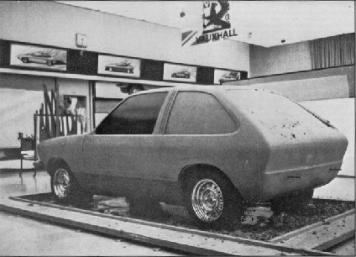
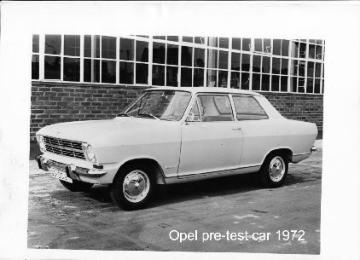
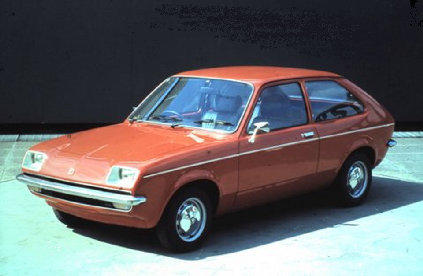
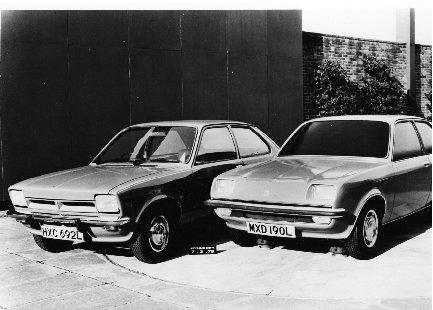
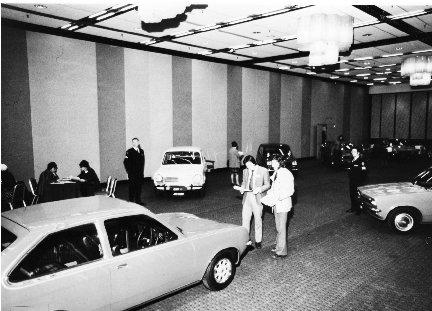
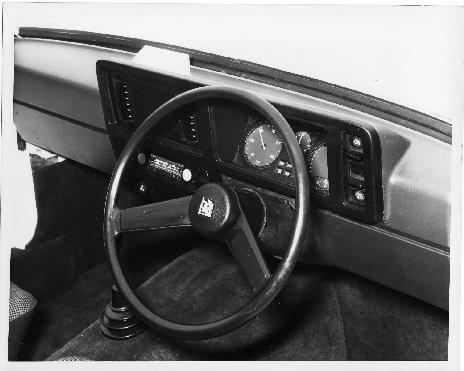
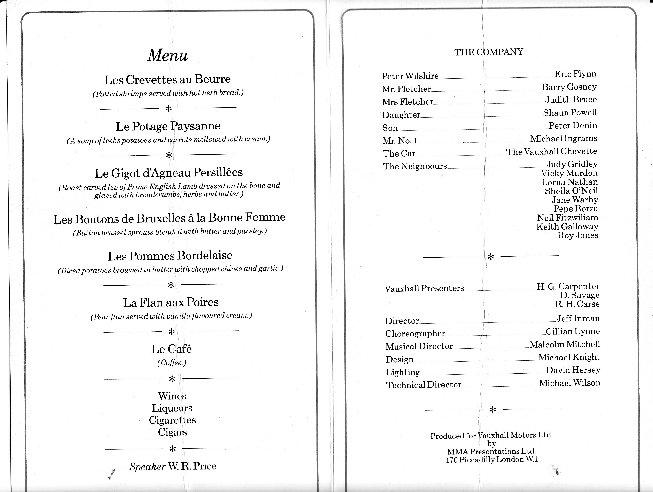
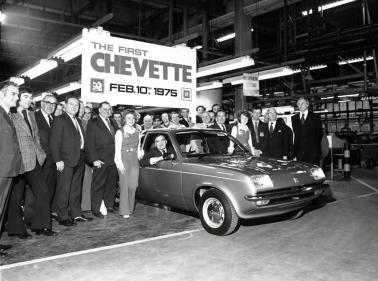
First Chevette of the production line February 10th 1975.
Early Chevette Clay mock up’s
Original T-Car mock up showing Kadett B Body with 1256cc engine.
Chevette Prototype on the viewing Terrace.
The Opel and Vauxhall front end.
The Chevette Sales Clinic.
Mock up of the Chevette Dash board.
The above is the menu and information on the accompanying musical
production called 'The Company' for the Press Launch of the Vauxhall Chevette.
The Chevette Hatchback and L Estate.
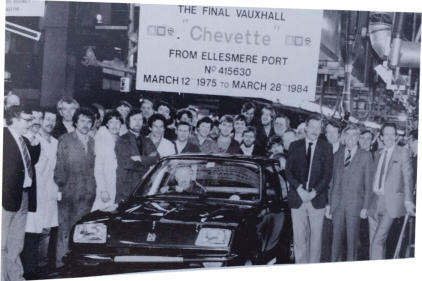
Last Chevette off the Ellesmere Port production line 28th March 1984.
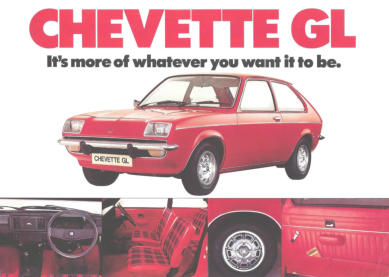
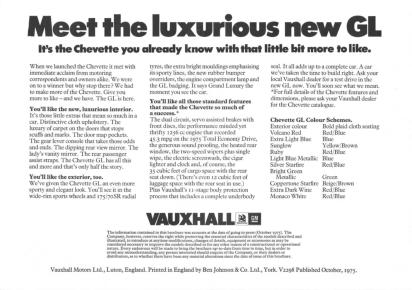
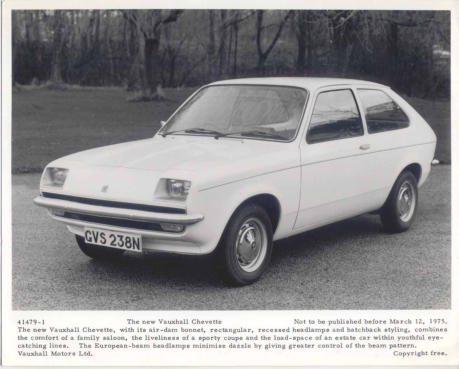
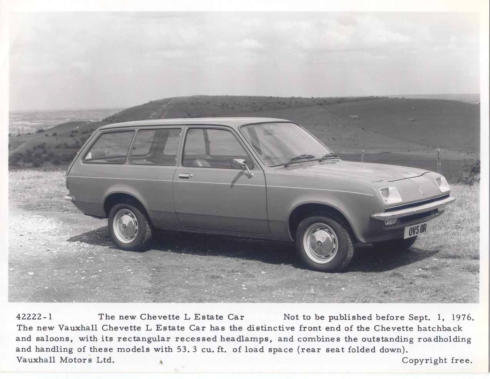
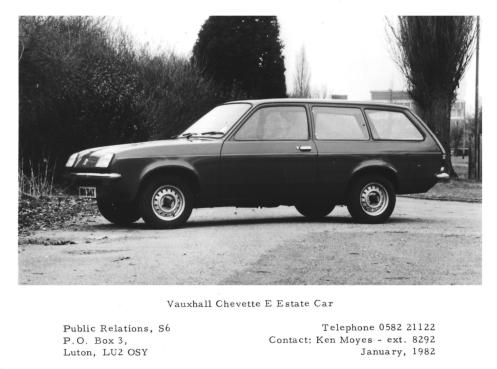
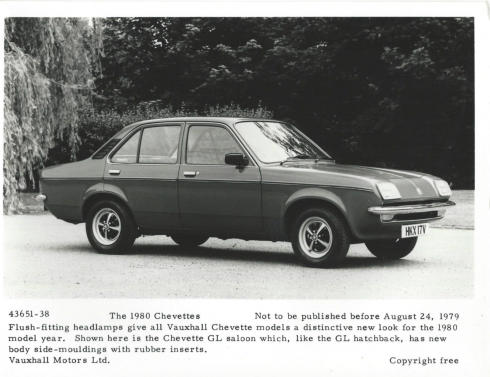
The Chevette E Estate and the Chevette Saloon.
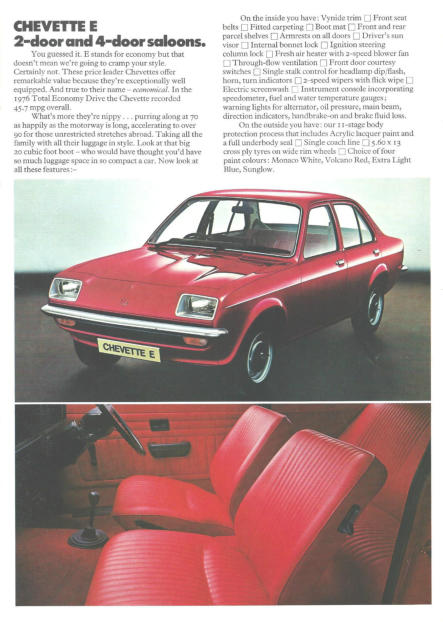
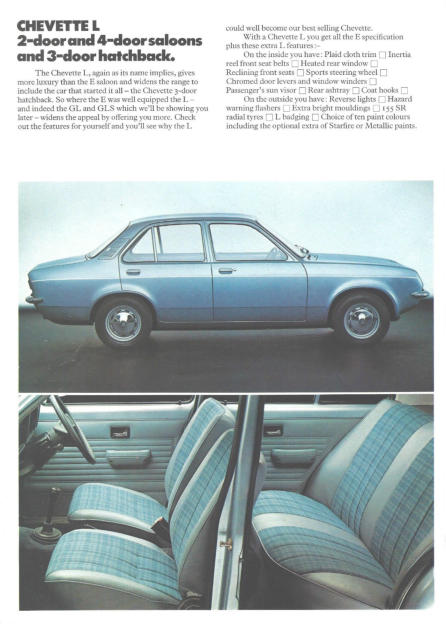
The Chevette L and Chevette E Saloon’s..
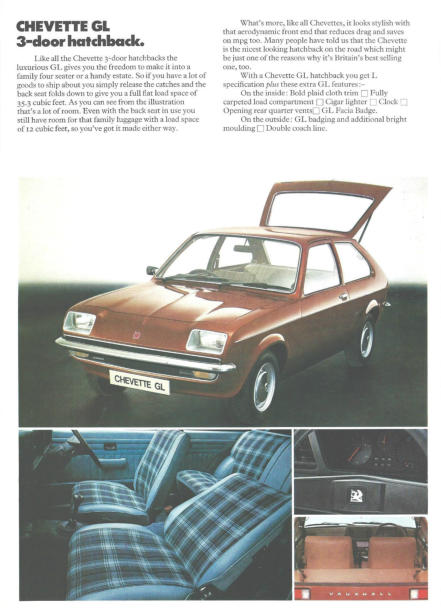
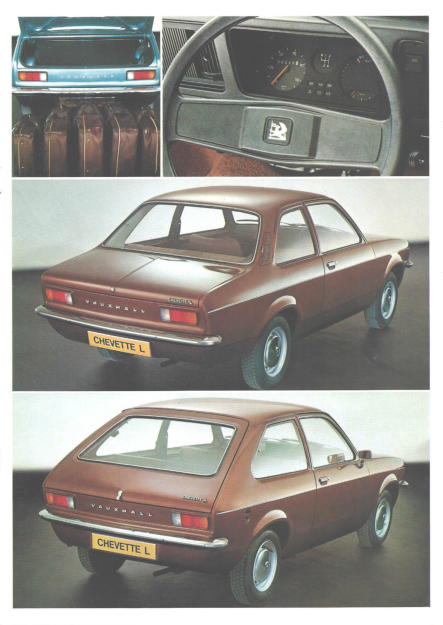
The Chevette GL and L Saloon and Hatch.
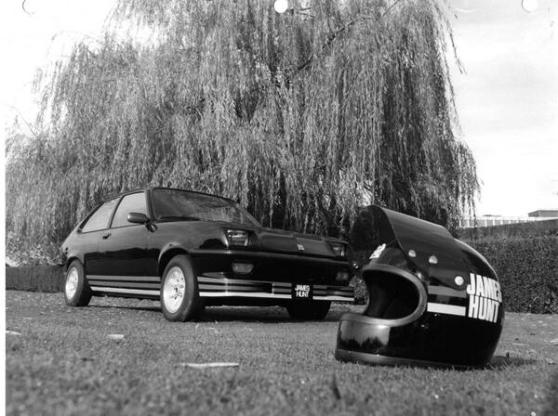
Special Chevette HS Painted black with James Hunt colours on the car. It is believed
that this car was presented to James Hunt when he was a Vauxhall Ambassador.
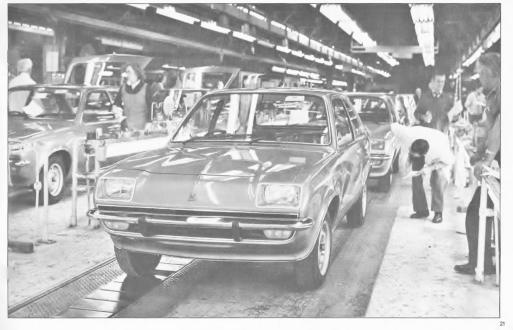
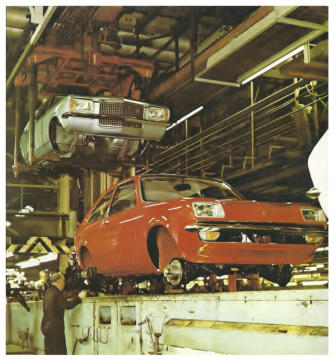
The Chevette in Production.
Press Release Date:
12th March 1975 - 1st Public display Geneva Motor Show March 1975
UK Production Date:
10th February 1975 to 28th March 1984.
On Sale from:
2nd May 1975
Production Location:
Luton, Ellsmere Port UK and CKD assembly New Zealand.
Program Code:
XP-901/XP-949/S-Car/T-Car
Total Production:
415,630
Director of Design:
Ed Taylor June 1970> Wayne Cherry March 1975>
Lead Project Designer:
Wayne Cherry.
Chief Engineer:
Doug Bull Chief Engineer Passenger Cars.
Development and Safety:
John Pope.
































